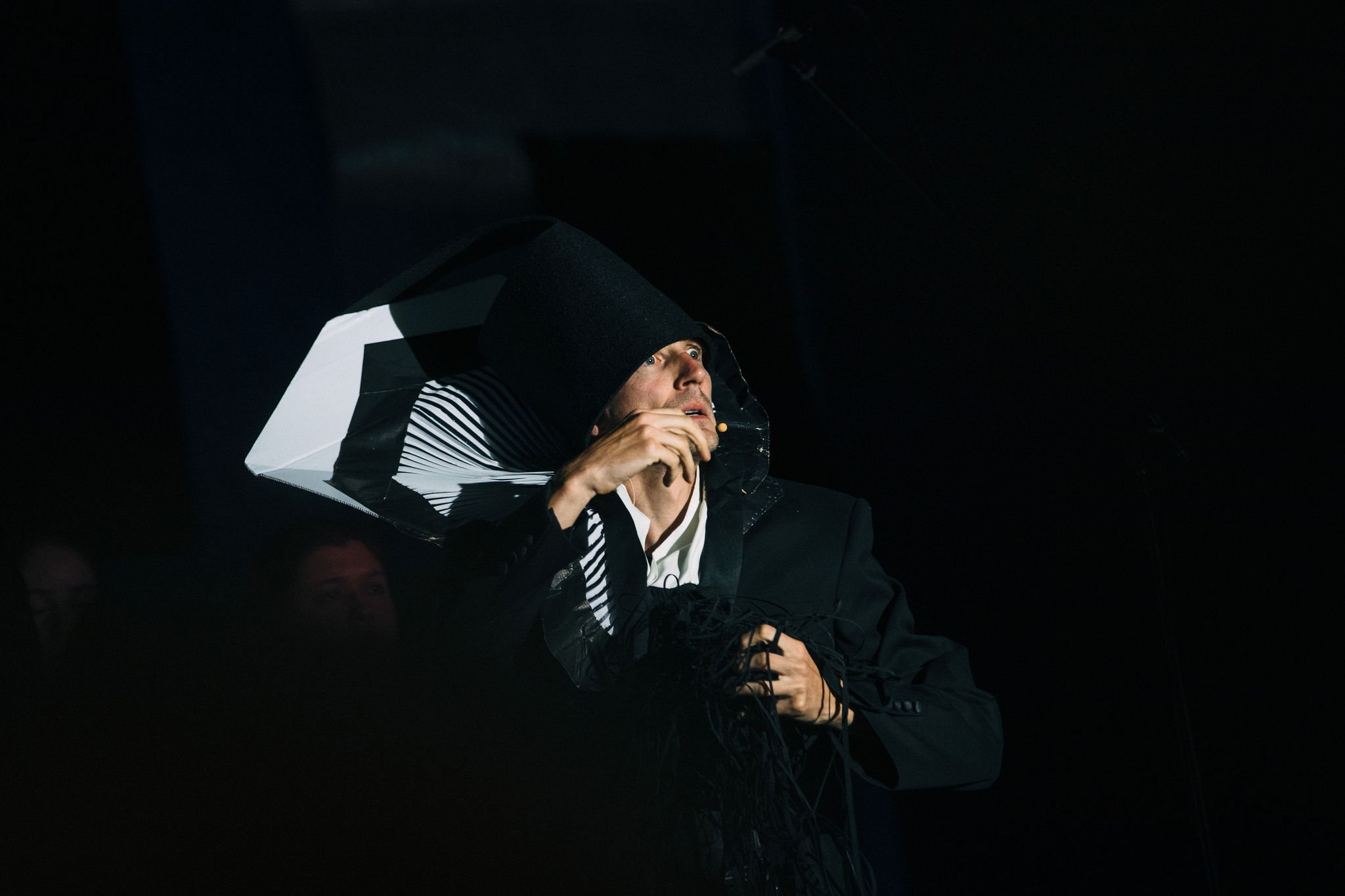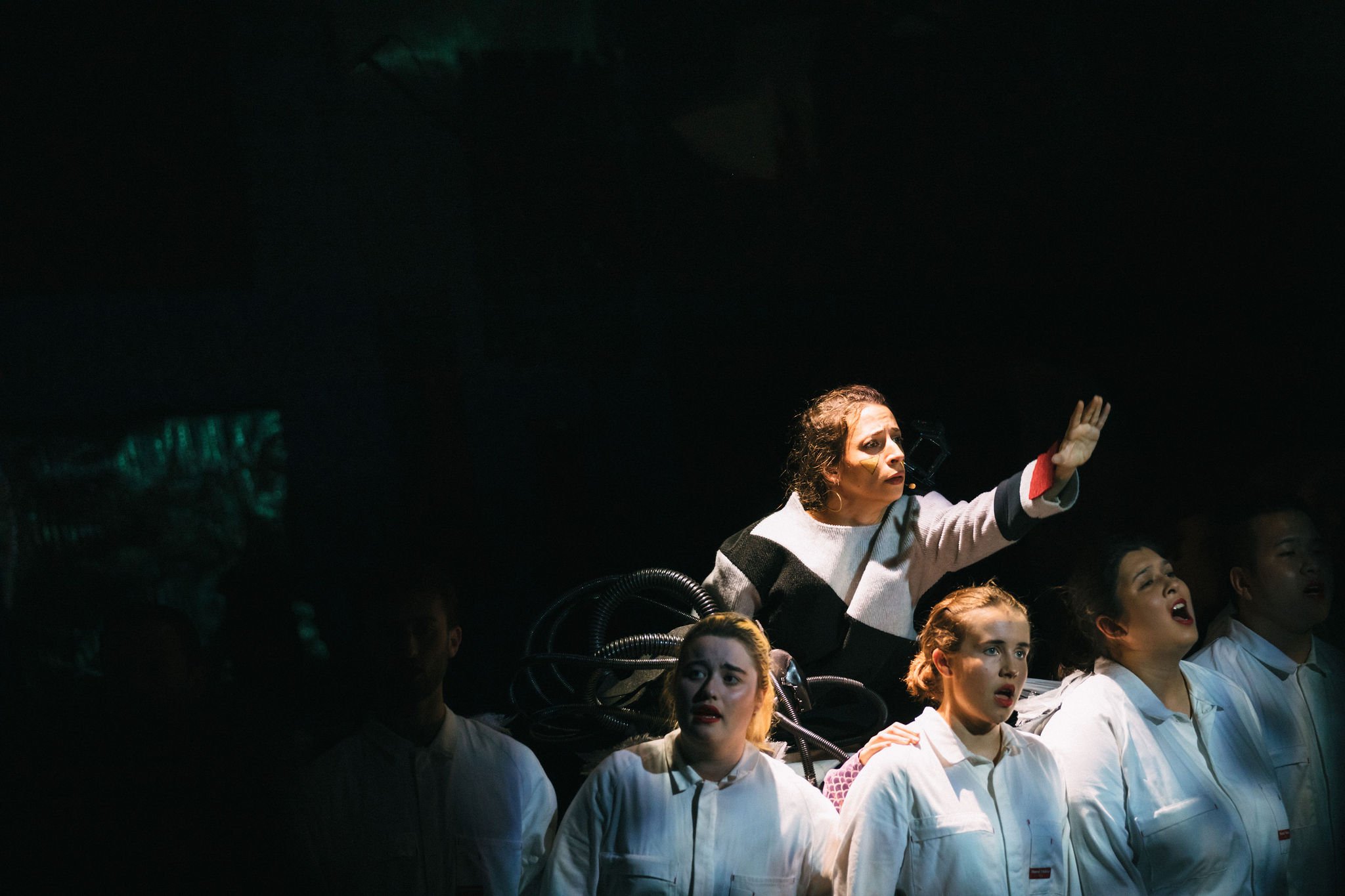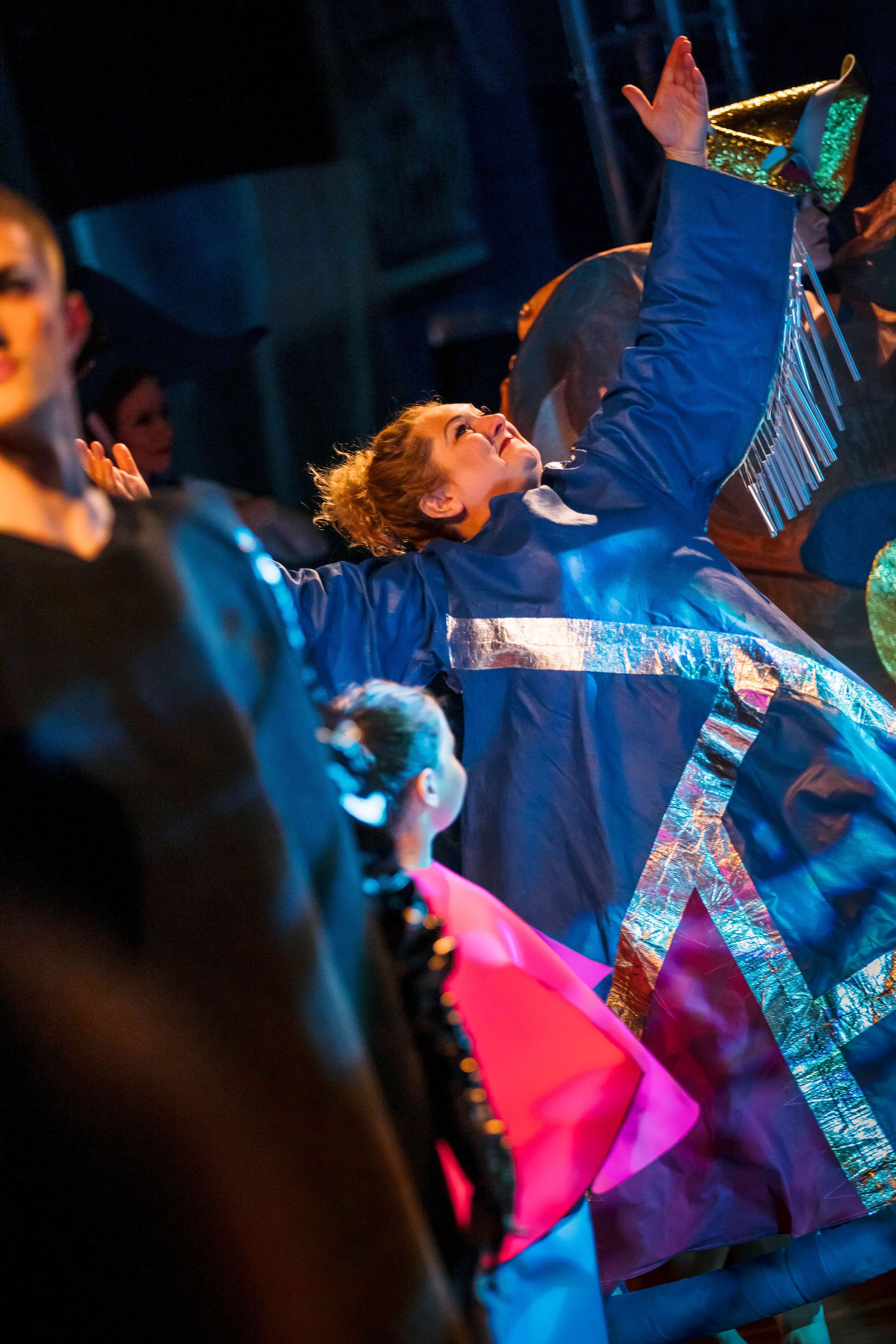Saucepans and data: Justene Williams’s ‘Victory over the Sun’
/In 1913, the premiere of Victory over the Sun resulted in a riot due to its absurdity. The Russian futurist anti-opera’s libretto was written by Aleksei Kruchyonykh in an invented untranslatable Zaum language, with experimental music by Mikhail Matyushin, and bold set and costume design from Kazimir Malevich where he first debuted his seminal Black Square painting design. Despite its initial negative reception, Victory over the Sun is attributed to revolutionising the Russian avant-garde and has seen several restages over the past century.
The performance centres around a group of futurists who seize the sun and navigate the conflicts and consequences following its capture. Its most recent adaptation saw a re-imagination by the Meanjin/Brisbane-based artist Justene Williams, commissioned for the 20th Biennale of Sydney in 2016. This 2022 version, co-presented with Sydney Chamber Opera and the Australian National University Chamber Choir, with production by the Street Theatre, was performed recently at the National Gallery of Australia (NGA) for the gallery’s fortieth anniversary.
Describing her modern iteration as ‘baroque grunge’ with an ‘arte povera aesthetic’, Williams transformed the NGA’s Gandel Hall into an unrecognisable dark space filled with colourful square collages. The floor-length installation made from felt, plastic sheets and sunshades draped over the walls and windows, blocking out all natural light. Neon pink and blue spotlights lit up the room in all directions, creating a playful atmosphere that welcomed the audience. A bright orange acrylic cube hung from the centre of the ceiling above a black box. It represented the sun, suspended in midair, waiting to be seized, defeated and locked away in Malevich’s signature square.
The material experimentation was most visible in the elaborate costumes which expanded from Malevich’s original designs to incorporate objects such as saucepans attached to a headdress and chimes sewn to sleeves, serving as percussion. The voluminous and vibrant outfits were showcased with the performers’ exaggerated movements throughout the hour-long performance.
The elaborate choreography was highlighted by the open stage design that allowed for the costumes to be viewed at every angle from the stretch of three-tiered benches facing each other – a set-up mirroring a fashion runway, creating an immediate engagement with the audience.
The nonsensical libretto and a video montage were projected onto the walls. Mixed with wordplay, references to Kruchyonykh, data, time travel and contemporary machines (such as a coffee maker), the amusing non-linear verses were consistently met with laughter. In a similarly unpredictable manner, the footage ranged from Aztec temples to blood cells, and from rocket launches to superimposed geometrical shapes making nods to the suprematism movement. Small vintage TVs placed around the space broadcast the live musicians playing experimental compositions from an ensemble of the theremin, keyboard, flute and strings.
The numerous moving components in the undefined stage were visually overwhelming at times, evocative of the saturated ways in which digital content is increasingly consumed in shorter intervals. In this way, the restaging of the 2016 iteration of Victory over the Sun felt extremely timely as its chaotic nature encapsulates current anxiety-inducing discussions about the future.
Chin-Jie Melodie Liu, Kamberri/Canberra
Produced as part of the National Gallery of Australia’s fortieth anniversary celebrations, Justene Williams’s Victory over the Sun was performed in the gallery’s Gandel Hall, Kamberri/Canberra, on 14 and 15 October 2022.








